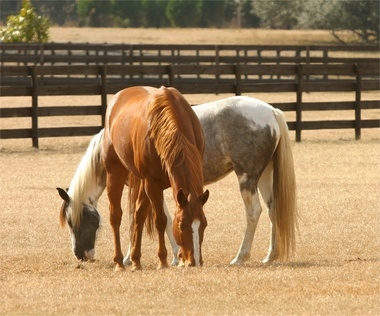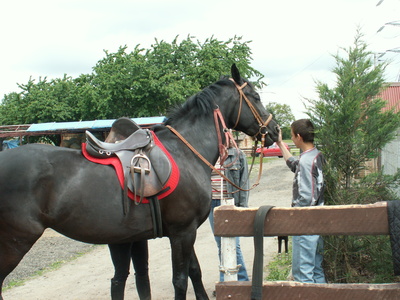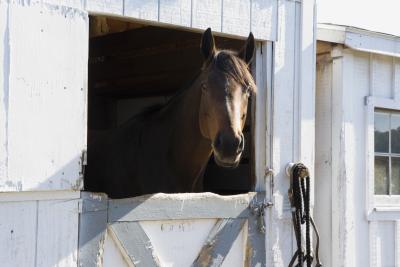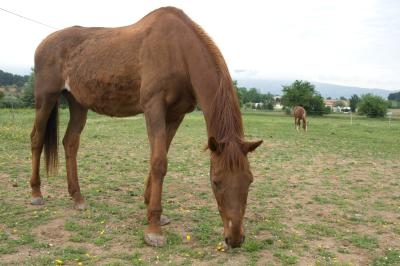
How to Fatten Up a Horse Fast. Decide on a conditioning process to get your horse into better physical condition. To fatten a horse up quickly, you will need to combine proper levels of exercise, follow a predetermined feeding schedule and work closely with your veterinarian to ensure there are no underlying conditions that can jeopardize the health of your horse. Generally, the longer amount of time you have, the safer this process is for your horse. Horses who gain weight too quickly are at risk for founder as well as colic, both of which are very serious.

Have your horse examined by a veterinarian, who may be able to provide insight as to why your horse is losing weight. If there is a parasitic or bacterial infection, or if the horse has an underlying disorder that requires medical management, no amount of conditioning will help him gain weight. Your veterinarian will want to perform a number of diagnostic tests including taking a blood sample, a fecal sample and X-rays to rule out any medical conditions.
Add vitamin and mineral supplements as recommended by your veterinarian. During your horse's examination, your veterinarian may determine that your horse needs some nutritional supplements that will help support his body and ultimately help fatten him up.
Score your horse's body condition. In order to determine the severity of your horse's weight loss, perform a "Horse Body Condition" test on him. Assess the amount of fat cover your horse has by looking at each section of the horse (neck, withers, shoulder, ribs, loins and tail head) and give each area a score from 1 to 9 ("1" meaning that the underlying skeletal structures are easily visible, while "9" indicates that the area is bulging with fat). Add the six scores together and divide by 6. Scores between 4 and 6 are acceptable, with 5 being ideal. More than 6 is considered overweight, and less than 4 is considered underweight and even neglected.
Pasture the horse in a grass-rich enclosure. Horses that need fattening should be kept, weather permitting, in a grass-rich enclosure to encourage normal grazing behavior. This will ensure that the horse has access to roughage, the staple of any horse's diet, at all times and will encourage healthy digestion. For horses that cannot be pastured, hay should be offered at all times. If you own a pony, consult your veterinarian about how much pasture time is appropriate to avoid founder.
Supplement a grass or hay diet with grain. Your underweight horse will need a protein-rich diet in order to help him put on weight and build muscle. Your veterinarian will be able to recommend the appropriate high protein grain-based feed.
Lightly exercise your horse. Horses need to move in order to digest their feed properly and build muscle. However, underweight horses should not be exposed to rigorous exercise routines. Allow you horse free roam of a pasture, turn it out in an arena or utilize a walker to encourage exercise.
 How to Get Rid of Rain Rot on My Horse
How to Get Rid of Rain Rot on My Horse
How to Get Rid of Rain Rot on My Horse
How to Get Rid of Rain Rot on My Horse
 Horse Shelter Ideas
Horse Shelter Ideas
Horse Shelter Idea
Horse Shelter Ideas
Horse Shelter Ideas
Horse Shelter Idea
 What Are Some Things You Can Do to Show Your Horse That You Are the Boss?
What Are Some Things You Can Do to Show Your H
What Are Some Things You Can Do to Show Your Horse That You Are the Boss?
What Are Some Things You Can Do to Show Your H
 Ideas for Nice Horse Stalls
Ideas for Nice Horse Stalls
Ideas for
Ideas for Nice Horse Stalls
Ideas for Nice Horse Stalls
Ideas for
 How to Fatten an Underweight Horse Safely
How to Fatten an Underweight Horse Safely
How to Fatten an Underweight Horse Safely
How to Fatten an Underweight Horse Safely
Copyright © 2005-2016 Pet Information All Rights Reserved
Contact us: www162date@outlook.com